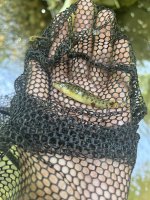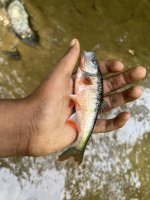Fish Sticks
Well-known member
” co-exists”, has this been studied? because i doubt their size and demographic structure has been unaltered by invasive brown trout.Rosyside dace do well in combination wild Brown Trout too. I would categorize them as a cool water species, probably more likely to be found with Brown Trout and in transition zones from coldwater to warmwater environments. This is another native species that coexists quite well with wild Brown Trout populations in the lower Susquehanna Basin.
We tend to blame agriculture and other stream factors entirely for the disappearance of certain dace, minnows, shiner and darter species but as you can see we have ignored invasive predators.
“Layered over the shift in thermal communities was the presence of large-bodied (piscivorous) brown trout, which along with agricultural land use, was a consistent determinant of community diversity and presence-absence of nine common native species. Small-bodied taxa (minnows, darters) were the most responsive to the presence of these large non-native predators. Our results highlight how the presence of a non-native species can modify the interactions between natural and anthropogenic stressor gradients and therefore confound the ability to detect signals between land use stressors and local stream community composition.”







